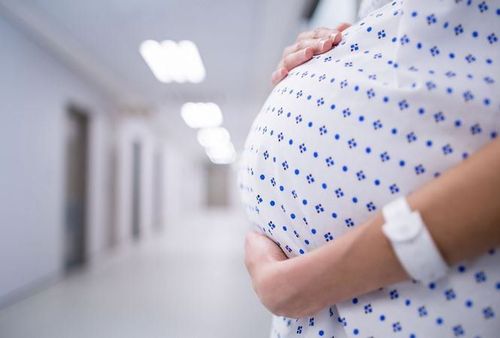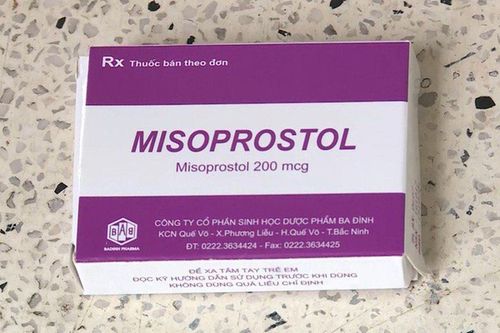This is an automatically translated article.
The article is professionally consulted by Master, Resident Doctor Nguyen Thanh Vinh - Department of Obstetrics and Gynecology - Vinmec Ha Long International General Hospital.
About 5-8% of pregnancies develop preeclampsia. Because preeclampsia is a systemic syndrome of pregnancy, delivery is the only definitive treatment.
1. What risks may occur during childbirth?
If preeclampsia is severe, the doctor may recommend artificial labor or cesarean section. Which method is applied will be based on the specific clinical assessment of the doctor on each case. Normally, the more term the fetus is, the more likely it is to have an artificial labor vaginal delivery, and the more premature the fetus is, the more likely it is to have a cesarean section because the woman's cervix is not ready to dilate. out for childbirth.If a pregnant woman's high blood pressure gets worse, it can lead to life-threatening complications. Complications that may occur for pregnant women during childbirth include:
Hemorrhagic stroke in the brain. Convulsions. Comatose. HELLP syndrome, with symptoms of hemolysis, elevated liver enzymes, and thrombocytopenia, can cause irreversible damage to the nervous system, lungs, and kidneys of pregnant women. When preeclampsia is accompanied by seizures, the woman has eclampsia. When a pregnant woman has a seizure, the fetus will suffocate, and the mortality rate for the fetus is 1 in 14. Furthermore, pregnant women who have had a stroke due to preeclampsia are at increased risk of permanent brain damage or even death.
According to a 2005 report by the World Health Organization (WHO), 12% of maternal deaths related to pregnancy and childbirth are due to hypertensive disorders such as preeclampsia and eclampsia. .
Preeclampsia also affects the fetus, especially after going through a stressful delivery process. Complications that can occur to the fetus during delivery include:

Tiền sản giật cũng gây ảnh hưởng tới thai nhi
2. Prognosis for pregnant women with preeclampsia
Hypertension is the third leading cause of maternal death in pregnancy and childbirth, according to a study by the International Journal of Women's Health. Mortality rates will be lower in developed countries (like the United States). The risk of death or brain damage is also reduced if preeclampsia is detected early and treated appropriately.Close monitoring and hospital treatment also reduce the risk of death or brain damage from preeclampsia. Early and regular prenatal care is the most important thing in minimizing the risk of complications for the mother and baby, because it helps doctors detect and treat abnormalities early.
Babies born prematurely due to preeclampsia face many health problems later in life, including:
Mental retardation. Physical disability. Cerebral palsy. Epileptic. Blind. Deaf. The only solution to completely ending preeclampsia is delivery. But the timing of delivery depends on the maturity of the fetus and the severity of the preeclampsia.
After delivery, blood pressure values will gradually return to normal after a few days to a few weeks, and still need to be monitored until all signs return to normal.
3. How to prevent possible complications?

Phòng tránh các biến chứng bằng cách nào?
Usually oxytocin will be used to induce artificial labor. Besides, anesthetic or another form of anesthesia (depending on the specific patient) will be considered by the doctor to reduce pain for the patient. However, pregnant women with low platelet counts may not be able to use anesthesia.
During labor, medications to help stabilize blood pressure, such as hydralazine or labetalol, will be used. Magnesium sulfate is also commonly prescribed to prevent seizures. In some situations, the patient will be prescribed oxygen.
The medical staff will monitor the patient's knee reflexes after using magnesium sulfate. Loss of knee reflex is the first sign of overdose, which, if not detected in time, can lead to respiratory paralysis or cardiac arrest.
The doctor will closely monitor the condition of the pregnant woman and the fetus. If a woman has heavy bleeding, anemia, or a low platelet count, a blood transfusion will be given.
Doctor Nguyen Thanh Vinh has many years of experience in major hospitals such as Hue Central Hospital, Hue University Hospital of Medicine and Pharmacy and is the main doctor who practices medicine at Hanoi Obstetrics and Gynecology Hospital.
Please dial HOTLINE for more information or register for an appointment HERE. Download MyVinmec app to make appointments faster and to manage your bookings easily.
Article referenced source: healthline.com












